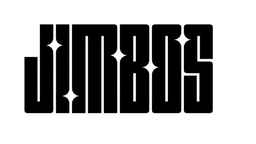The Complete Guide to Paint Correction – Swirl Removal 101
Ready to make your paint look like glass? Here’s everything you need to know—from swirl removal to final protection.
What Is Paint Correction?
Paint correction is the act of removing surface defects—like swirl marks, light scratches, oxidation, and water spot etching—by using a machine polisher and abrasive polish to level the clear coat and reveal smooth, reflective paint.
Common Paint Defects You Can Fix
- ✅ Swirl marks
- ✅ Oxidation
- ✅ Light scratches (in the clear coat)
- ✅ Etched-in water spots
Learn more: What Paint Defects Can (and Can’t) Be Fixed
What Causes These Defects?
- Improper washing and drying
- Dirty towels, sponges, or brushes
- Automatic car washes with aggressive bristles
Beginner-Friendly Correction Tools
To get started safely, you’ll need:
- Picture Perfect Polish
- Dual Action Polisher
- Polishing pad (medium or soft)
- The Super Soaper (for prep wash)
- Softer Than Soft Towels
Read more: Paint Correction for Beginners
What’s the Difference Between Compound and Polish?
Compound = Cut Polish = Refine
Use compound for deep defects, polish for light swirls or final gloss. Or skip the hassle and use a pad-dependent one-step like Picture Perfect Polish.
More: When to Compound vs When to Polish
One-Step vs Multi-Step Correction
One-step correction is faster and often just as effective—especially when using a product like Picture Perfect Polish that cuts and finishes depending on pad choice.
- ✅ One-step = faster, simpler, cost-effective
- ✅ Multi-step = more control, better for show cars or trashed paint
Compare: One-Step vs Multi-Step
How to Avoid Holograms and Polishing Mistakes
Finish with a soft pad. Don’t overload polish. Wipe residue completely. Always inspect in natural or LED light.
Do You Need to Polish After Clay Bar?
Yes—especially if you’re applying ceramic protection. Clay can leave marring. A quick one-step polish removes haze and maximizes shine.
Learn more: Do You Need to Polish After Clay?
What Pad Should You Use?
Your pad = your result. Choose cutting for heavier defects, polishing for balanced correction, or finishing for soft paint and gloss.
Protect Your Work – Apply Ceramic Spray After Polishing
Once you’ve corrected the paint, you need to lock it in. Tough As Shell Ceramic Spray adds hydrophobic protection and gloss for up to 6 months.
Should You Apply Ceramic Spray After Polishing?
Final Thoughts
Paint correction doesn’t have to be complicated. With the right polish, pad, and a bit of patience, you can dramatically improve your paint in a weekend. Start with one step, focus on safe technique, and protect your work when you’re done.
👉 Grab Picture Perfect Polish and Start Correcting Like a Pro



